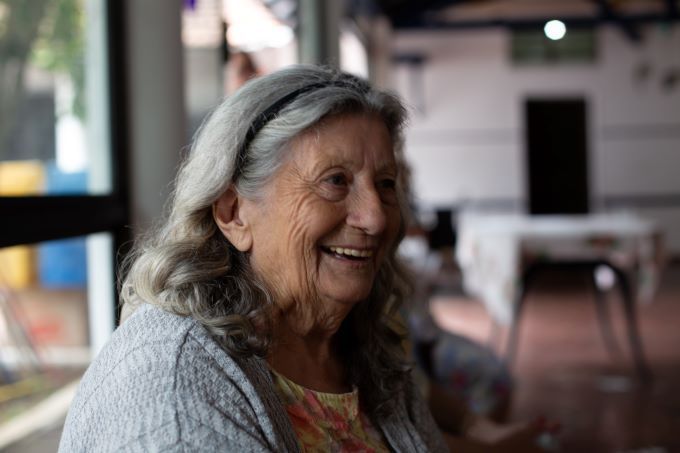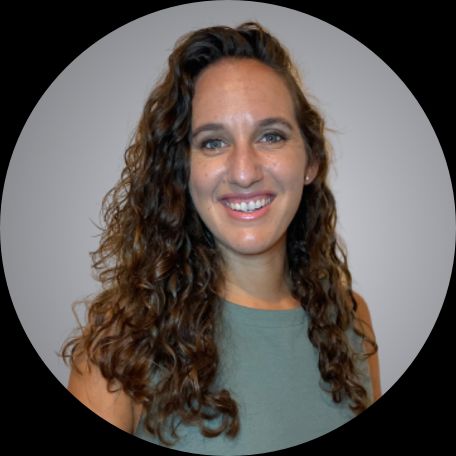Levels of Care in Assisted Living: What You Need to Know
Wondering how assisted living determines the level of care you'll need - and how much you'll pay? Seniorly's got everything you need to know about how an assisted living community will determine your level of care.

When it comes to finding an assisted living situation that's the right for you or your family members, it's not a one-size-fits-all matter. Every individual has unique needs, and it's crucial to understand the difference in levels of care, the impact they have on assisted living pricing, and how the levels of care are determined in the first place. Assisted living levels are an important part of the decision-making process, and we're here to help you learn everything you need to know to make confident decisions.
Assisted living care assessments: what's included?
Trained nurses are usually in charge of conducting an assisted living care assessment and making the appropriate recommendation. Interestingly, there is no universal standard for levels of care. Most assisted living communities use their own scale, or a state standard, to determine how much care their residents need. In California for example, a form 602 will outline these items, while in Rhode Island, the assessment is slightly different. Regardless of what state you live in, assessments will often cover the following items:
- Mobility: Here, things like getting up from a chair, moving around, and walking independently are looked at. It's all about making sure movement is safe and manageable.
- Eating and drinking: It's important to check if someone can eat by themselves or if they'll need a bit of help during meal times.
- Medical history review: Going through past and present medical records is vital to understand what conditions the person has, what help they might need, and if there are any risks that need to be managed.
- Toileting: Nobody likes to talk about it, but it's important to check someone's abilities when it comes to bathroom habits. If toileting is a challenge, then a higher level of care might be required.
- Substance use history: It may not be a comfortable topic, but it's crucial to understand if the person has a history of drug or alcohol use. This information plays a crucial role in planning care and understanding the person's overall health context.
- Medication management: One key part of the assessment revolves around the person's ability to manage their medications. Can they remember when and how to take them?
Essentially, an assisted living assessment revolves around evaluating activities of daily living, often abbreviated as ADLs. These are the basic tasks that we perform every day, things that most of us take for granted By examining how well someone can manage these activities, the trained nurse can gauge the level of assistance that individual might need.
Levels of care in assisted living: the acuity scale
Some assisted living communities use an acuity scale to determine how much care a resident needs. For some communities, this might be a scale of 1-3, for others, it might be more nuanced and go from 1 to 5. This scale helps community staff understand what each individual resident might need day-to-day, and it helps them to evaluate residents over time, to adjust their care as their needs change.
When you’re visiting or evaluating assisted living communities, ask staff if they have such a scale and how they define each level of care. Also, be sure to ask if there is a level at which they might not be able to care for your loved one, or at which additional caretakers may need to be brought in.
If the assisted living facility allows it, nurses, rehabilitation therapists, or hospice workers might be able to tend to your loved one in the home they’ve known in their assisted living community.For example, level 1 care might mean that a senior needs help with a single ADL, like dressing, or just reminders about taking medication, while level 5 care could mean that a senior needs help with four or more ADLs throughout the day.
A note on high vs low acuity:
You might come across the terms “low acuity” or “high acuity” when discussing care levels for older adults. To simplify, low-acuity patients need very little care in comparison to high-acuity patients.
- High Acuity: This refers to situations where individuals require extensive, round-the-clock care due to physical limitations, severe cognitive impairments, or serious medical conditions. Such individuals often need help with most, if not all, daily activities, ongoing medical treatment, and constant monitoring to ensure their safety and well-being.
- Low Acuity: On the other end of the spectrum, low acuity refers to individuals who maintain a level of independence and require less hands-on care. These individuals may need assistance with only a few specific tasks, such as bathing or medication management, and generally remain mobile and cognitively sound.
Level one: low level or minimal assistance in assisted living

Individuals whose care needs are minimal would be categorized as needing a low level of care in an assisted living facility. For these individuals, a community that includes an Independent living option is great. This term often covers seniors living independently within their own condos or homes in a 55+, or independent living senior community. Seniors in these environments have full kitchens to prepare their own meals (even if group dining is an option) and might still have their own cars. Seniors in independent living typically don’t need or receive any help with the activities of daily living (bathing, dressing, eating, etc.).
Seniors living in CCRCs (Continuing Care Retirement Communities) might start out in the independent living side of the community, and age in place: moving to the assisted living wing when necessary and sometimes even into memory care, if they need it and their CCRC has this capability.
Those requiring a lower level of care would likely see this factored into a lower average monthly rent; that's why you'll want to figure out how much assistance they need.
Level two: medium level of care in assisted living

Assisted living is when trained caregivers help seniors with the activities of daily living (ADLs), a medical term you’ll hear frequently when discussing senior care.
When seniors are having trouble getting around safely, eating, or grooming (bathing, dressing, etc.), caregivers can provide more hands-on assistance. Think about if your loved one's needs would be better met with an at-home, hands-on assistance or in an assisted living environment.
Your loved one can receive the equivalent of assisted living care in their own home, with in-home care, or they can move into an assisted living community. These communities offer residential care and typically provide group dining, socialization with peers, accessibility, and safety features, as well as the availability of round-the-clock care. Assisted living staff can help seniors take medication on time and correctly, as well as help them with toileting or getting out of bed in the morning. Assisted living facilities usually offer suites or rooms that can be private or shared with a roommate, depending on seniors’ preferences and what they can afford. You can also find this care in board and care homes, which are much smaller than typical assisted living communities, usually operated out of a single-family home.
Level three: high level of care in assisted living

Aging adults often eventually need more care than assisted living can provide. Typically, this means that in addition to helping with ADLs, they also need medical services . Or they might temporarily need more intensive care, perhaps after surgery or illness. This is where skilled nursing facilities come in. Skilled nursing facilities (SNFs) can provide medical care for as long as seniors need it.
Seniors that need wound care, injected medication, rehabilitation therapies, or other skilled nursing care, can find this kind of care at SNFs. Some assisted living communities will also allow you to bring nurses or other outside specialists in, especially if it will just be for a limited time.
Other levels of care: memory care
Seniors with diagnosed Alzheimer's or dementia can have widely varying needs. Some might have memory issues for years and still only need some daily reminders, while others with advanced cases will need help with everything from bathing to eating.
Because each case is unique, it's a little difficult to fit memory care facilities into a low-to-high-care level framework. But in general, you can think of them as being on the higher end of the scale, since they are designed with extra security for wandering residents and hire specially trained staff.
Whether you and your loved one are looking for in-home care or a senior living community, the levels of care provided by each will progress along similar lines. If you aren't sure what level of care your elderly loved one needs, consider consulting with a geriatric care manager. Also, keep in mind that assisted living communities will want to evaluate your loved ones.
Choosing the right assisted living facility
While navigating the complexities of care options can be overwhelming, we are fortunate to have dedicated professionals, caregivers, and resources available to advise on care for our loved ones. Seeking advice from healthcare professionals, visiting different facilities, and gathering as much information as possible can help us make informed choices.
From independent living options that promote autonomy and social engagement, to assisted living facilities that provide support and assistance with daily tasks, and finally, to skilled nursing homes that offer round-the-clock medical care, each level of care serves a specific purpose and addresses different levels of dependency.
Above all, let us approach the care of our elderly loved ones with compassion, kindness, and a commitment to ensuring their quality of life.
Marlena del Hierro earned her Master of Arts degree in Gerontology from San Francisco State University and her Bachelor of Arts degree in Human Development from California State University. She also serves in an advisory capacity for Jukebox Health. Marlena is a vocal advocate for evolving the aging paradigm, and is a frequent contributor to public discussions about aging. She has served as a resource for media outlets like WGBH, FOX News, CNBC and the Today Show.
To learn more about Seniorly's editorial guidelines, click here.
Sign up for our Healthy Aging Handbook
Seniorly’s Senior Living experts created a comprehensive handbook to help people age happily while ensuring they love where they live. Enter your email address below to receive your copy and learn more about Healthy Aging and Senior Living.*
*By submitting your email address above, you consent to receive occasional email communications from Seniorly, including educational content and tips, newsletters, and other relevant updates and offerings. You can unsubscribe at any time and we will never sell or distribute your email address to a third party. You can view our Privacy Policy here.
